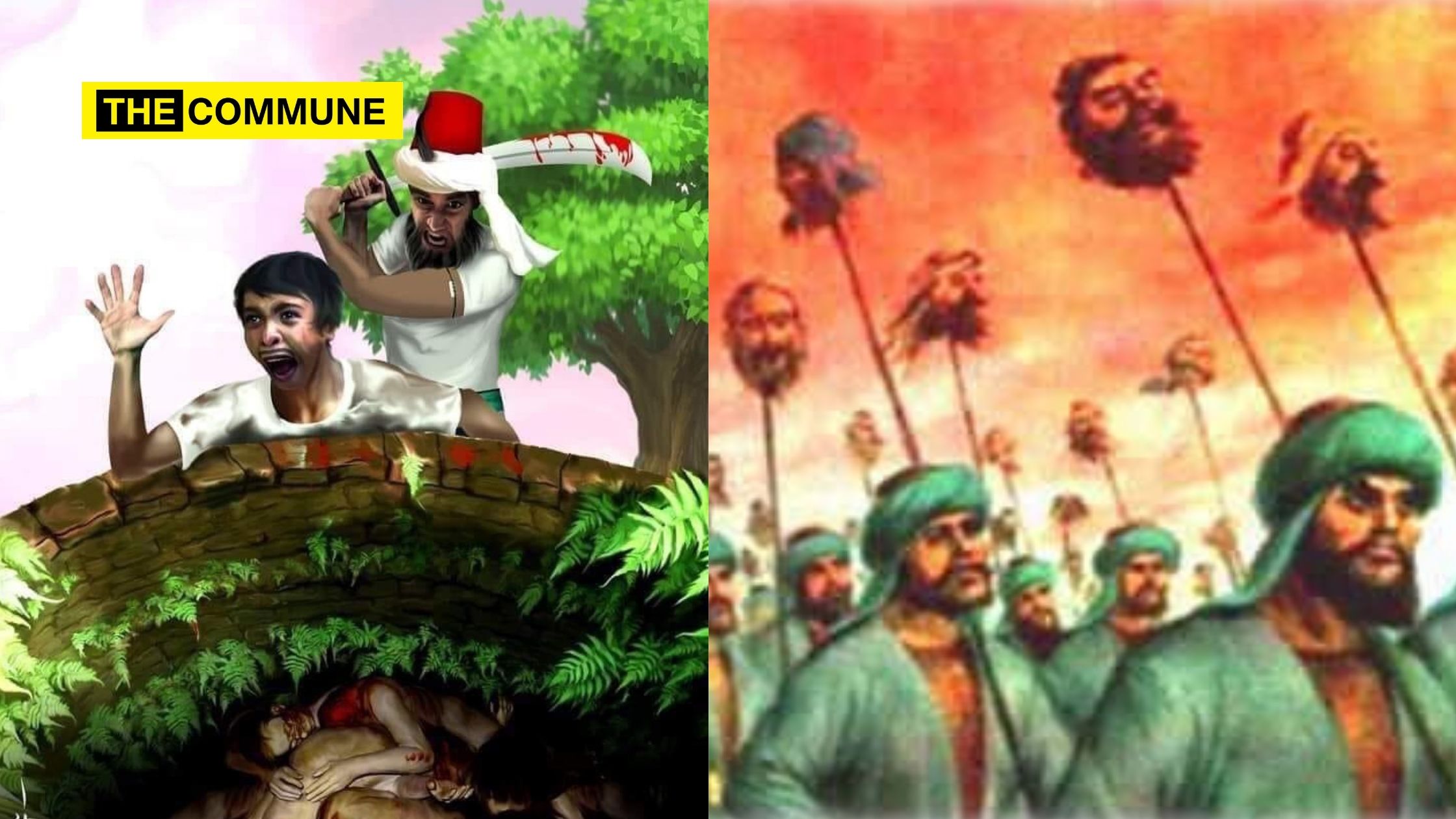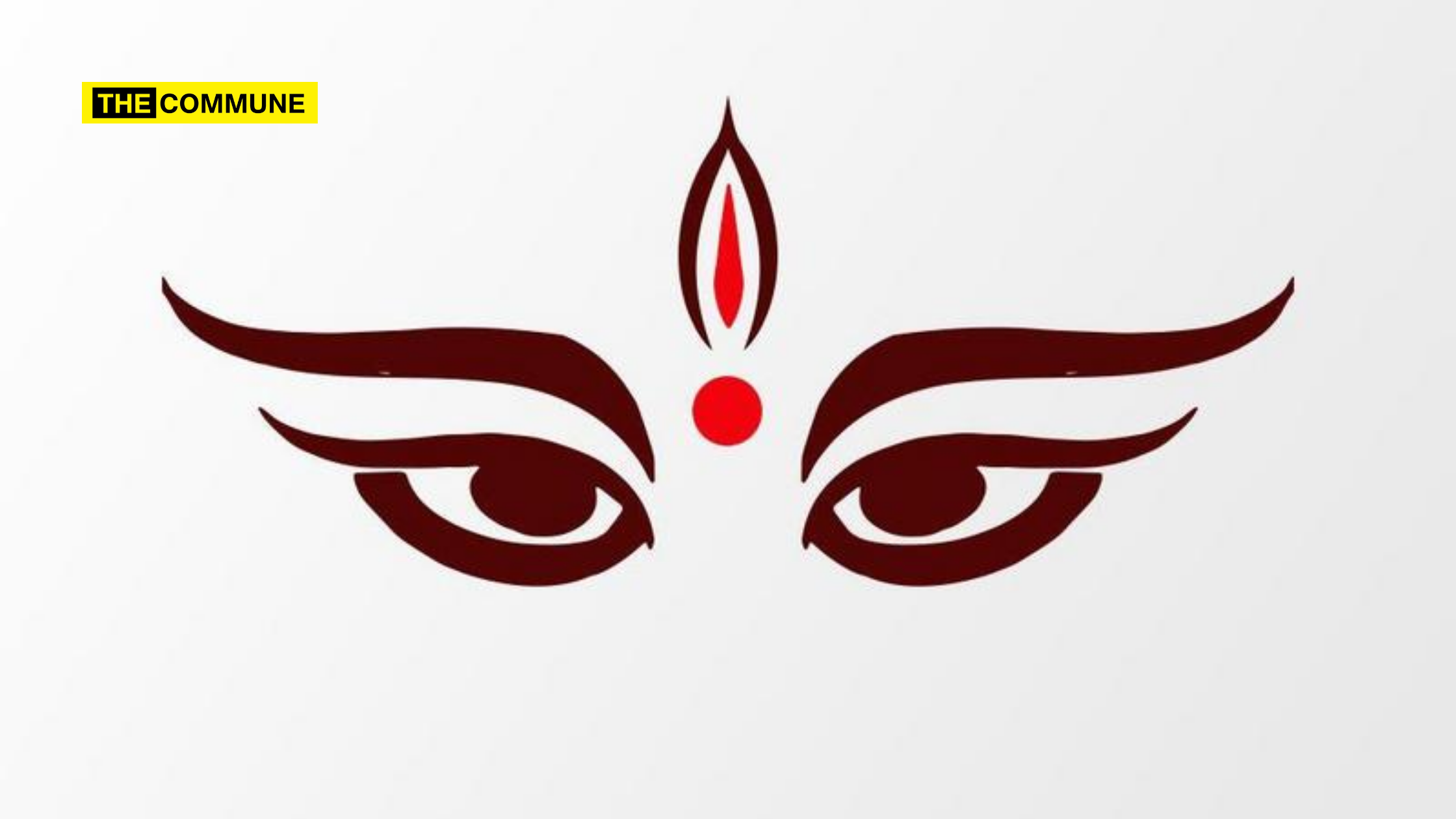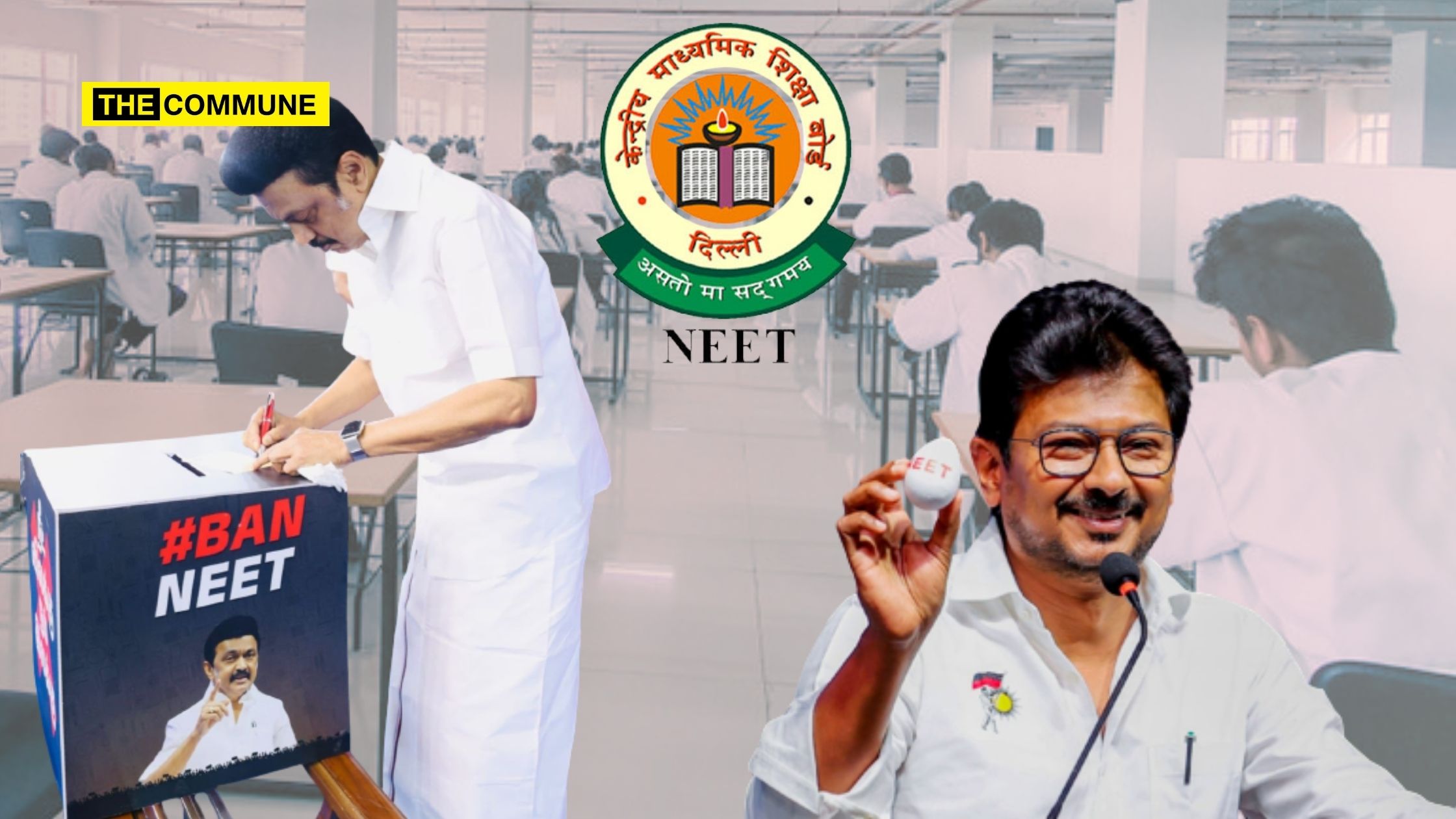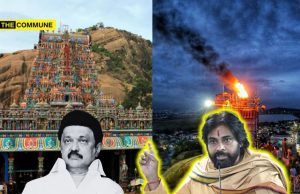
Foreword – “The article has been written to put the record straight- there has been a sustained effort among the modern researchers to paint the Mappila rebellion of 1921 in Malabar as a peasant struggle or class war. The route to class war becomes easy if it is labelled as a peasant struggle and it has been the modus operandi for Jihad and Genocide in Malabar and adore it with adjectives like Rebellion or Struggle. The Mappila rebellion was directed by the Muslim fanatic clerics, waged as a Jihad and nothing else if we go through the accounts of R H Hitchcock, the Superintendent of Police in south Malabar in 1921.
Hence, it is evident from records that Jihadi texts existed in Malabar from the Portuguese period onwards. This inner stream of Jihad was at work in 1921. It is important to understand this inner meaning to comprehend the true history of the rebellion.”
Abani Mukherjee, a member of the Soviet Communist Party had given a note during the rebellion to Lenin, interpreting it as a class war. Modern European historians like Conrad Wood followed the hint and Indian Marxist historians like K.M. Panicker followed suit. The Muslim fundamentalists and Jihadists became very happy, and theses on the said rebellion flourished. The Muslim gangsters and Islamist clerics of 1921 have become Marxists now. The Marxists in Kerala recognized the act of Jihad as a freedom struggle, betrayed the Hindus, and subsequently rewarded the Jihadists with titles, rewards and pension.
E M S Namboodiripad, who later grew up to be a Marxist ideologue and Chief Minister of Kerala, was then a 12-year-old boy in a bourgeois Nambudiri Brahmin family in 1921. He described the plight of his family during the rebellion, in his autobiography, of which an excerpt reads:
The Mappilas in general in Malabar and our region Valluvanad, in particular, were in a frenzy. We stayed at Elamkulam itself for four or five days after the outbreak began. There were no untoward incidents in those days, in our area. But we had heard that atrocities have been committed in various places. Everyone feared that it is going to happen here too. Hence, to thwart any attempts by the rebels to attack us, we placed Mappila guards at the gate. Reports came that the rebellion, instead of subsiding, was spreading. Bridges were broken, Taluk offices were attacked and the rebels were forcibly taking money and paddy-these were the stories that we heard. It was decided that it was better for the women and children in our family to shift for some days, though the Mana was being guarded well.
– (EMS / Autobiography, p 76-79; translated by Ramachandran)
However, after becoming a Marxist, EMS betrayed the Hindus and in his book, Kerala, Yesterday, Today and Tomorrow, he went on to praise the rioters and the gory deeds through these words –
The local leaders may have organised these Mappila farmers, not for a non-violent noncooperation movement, but violent struggle. It took six months of hard work for the powerful soldiers of British imperialism to repress the revolution. The organised strength of the Mappilas was total. The rebel leader (Variyan Kunnath) Kunjahammad Haji could establish a people’s administration in the areas under Mappila control. The geography of South Malabar enabled them to do, intelligent guerilla warfare; it proved that once driven by frenzy, the Mappila farmers would be able to find ways and strategies to conquer any powerful enemy.
For EMS, the Jihad had become a class war. As the Chief Minister, he gifted the Mappilas, even a district called Malappuram. In the coming years, the Communists betrayed the Hindus once again in 1973, when the CM C Achutha Menon, a former classmate of EMS at St. Thomas College, Trichur recognized the Mappila rebellion as a freedom struggle as per government order going to the extent of sanctioning pension to the perpetrators of the violence. Thus, Hindu victims remained orphaned yet again.
Thus, communism grew in the soil where the Congress betrayed the Hindus in 1921. However, Eranad, the centre of the rebellion, remained with the Muslim League.
B R Ambedkar in his book, Pakistan or the Partition of India, has remarked:
Such is the history of Mr Gandhi’s efforts to bring about Hindu-Muslim unity. What fruits did these efforts bear? To be able to answer this question it is necessary to examine the relationship between the two communities during 1920-40, the years during which Mr Gandhi laboured so hard to bring about Hindu-Muslim unity. The relationship is well described in the Annual Reports on the affairs of India submitted year by year to Parliament by the Government of India under the old Government of India Act. It is on these reports that I have drawn for the facts recorded below:
“Beginning with the year 1920, there occurred in that year in Malabar what is known as the Moplah Rebellion. It was the result of the agitation carried out by two Muslim organizations, the Khuddam-i-Kaba (Servants of the Mecca Shrine) and the Central Khilafat Committee. Agitators preached the doctrine that India under the British Government was Dar-ul-Harab and that the Muslims must fight against it and if they could not, they must carry out the alternative principle of Hijrat. The Moplhas was suddenly carried off their feet by this agitation. The outbreak was essentially a rebellion against the British Government. The aim was to establish the kingdom of Islam by overthrowing the British Government. Knives, swords and spears were secretly manufactured, bands of desperadoes collected for an attack on British authority. On 20th August a severe encounter took place between the Moplahs and the British forces at Tirurangadi. Roads were blocked, telegraph lines cut, and the railway was destroyed in several places. As soon as the administration had been paralysed, the Moplahs declared that Swaraj had been established. A certain Ali Musaliar was proclaimed Raja, Khilafat flags were flown, and Eranad and
Valluvanad were declared Khilafat kingdoms. As a rebellion against the British Government, it was quite understandable. But what baffled most was the treatment accorded by the Moplahs to the Hindus of Malabar. The Hindus were visited by a dire fate at the hands of the Moplahs. Massacres, forcible conversions, desecration of temples, foul outrages upon women, such as ripping open pregnant women, pillage, arson and destruction—in short, all the accompaniments of brutal and unrestrained barbarism, were perpetrated freely by the Moplahs upon the Hindus until troops could be hurried to the task of restoring order through a difficult and extensive tract of the country. This was not a Hindu-Muslim riot. This was just Bartholomew. The number of Hindus who were killed, wounded or converted, is not known. But the number must have been enormous.
It is assumed that Dr Ambedkar had realised that in Malabar, it had been a failed Jihad and the Mappila rebellion aimed to establish the Kingdom of Islam.
Theosophist & one of the well respected people during India’s struggle for freedom during the Satyagraha, Annie Besant, who had presided over the first ‘Reform Conference’ in Malabar in the spring of 1921, also wrote in detail about the planned Jihadi Genocide of Malabar:
The fourfold programme was begun formally on August 1, 1920; Swaraj was to be attained in a year, and on August 1, 1921, the first step was taken in the Malabar Rebellion; the Musalmans (Moplas) of that district after three weeks of preparing weapons, rose over a definite area in revolt, believing, as they had been told, that British Rule had ceased, and they were free.
– The Future of Indian Politics (Theosophical Publishing House, 1922, p. 252).
She adds,
Mr. Gandhi...can he not feel a little sympathy for thousands of women left with only rags, driven from home, for little children born of the flying mothers on roads in refuge camps? The misery is beyond description. Girl wives, pretty and sweet, with eyes half blind with weeping, distraught with terror; women who have seen their husbands hacked to pieces before their eye, in the way “Moplas consider as religious”; old women tottering, whose faces become written with anguish and who cry at a gentle touch…men who have lost all, hopeless, crushed, desperate…Can you conceive of a more ghastly and inhuman crime than the murders of babies and pregnant women?…A pregnant woman carrying 7 months was cut through the abdomen by a rebel and she was seen lying dead on the way with the dead child projecting out of the womb…Another: a baby of six months was snatched away from the breast of his own mother and cut into two pieces… Are these rebels human beings or monsters?
The Nambudiri Sufferings:
Over 700 Nambudiris, men, women and children of all ages and stages have sought refuge from the taluks of Eranad and Calicut and are now under the shelter of the Zamorin Raja of Calicut. Many of them are reported to be staying at Mankavu and Chalapuram palaces. The Illam of Cherukol Nambudiri and the Chelari Madam of Thrikallur Devastanam were looted. Many Illams in the adjoining amsom of Karasseri were also destroyed or looted as also of Kanniparamba and Koorhakol amsoms, where even the houses of Nairs have not been spared. In addition to the above, Parapur, Ugrapur, Pulayakote, Sreekrishnapuram, Chathamangalam, Peruvembra, Koloti and Amritamangalam have suffered seriously.
Flayed Alive
Several recent reports show that between Variyankunnath Kunjahamad Haji and the Chembrasseri Thangal it has been decided that all Hindus residing in villages at the mercy of rebel bands, should be put to death unless they accept Islam. Instances are mentioned in which Hindus had been forced to dig their graves before being butchered. It is also reported that diabolical reprisals are being perpetrated against all persons known or suspected of supplying provisions to the military and police, one report stating that the Chembrasseri Thangal had ordered a Hindu to be flayed alive for supplying troops with milk. In villages like Melattur, Melmuri, Karuvarakundu and Toovur, the extermination of the Hindu population is being systematically carried on, but young women and girls who find favour with rebels, are forcibly carried away. Hundreds of Hindus are daily pouring into Malappuram, Vander, Manjeri, Angadipuram and other places where the presence or the proximity of troops and police officers security but as provisioning of even military is not an easy problem, as many as possible of the unhappy fugitives are being passed on to Calicut, Palghat and elsewhere.
It is evident from the day to day events, that the Mappila revolt was not a class war, but a Jihad waged against both the Hindus and the Christians. There was pan-Islamic interference and Muhammad Ali even spoke of an Afghan invasion of India and there were mysterious characters like the Lawrence of India and Abani Mukherji in the plot. Gandhi had become a hostage of the extreme Islamic elements in the Khilafat. The Communist Party of India has been a by-product of the Khilafat;muhajirs were the founding members of the Indian Communist Party in Tashkent in 1920 and two Khilafatists, Hasrat Mohani and Azad Sobhani were the founding members of the Communist Party at Kanpur in 1925. Thus, it became the inevitable mission of the Communist historians to brand the Mappila rebellion as a class war.
The Mappilas had murdered or captured several Thiyas or Cherumars, who belonged to the lower rungs of the Hindu society. All of the 16 dead in the first genocide in the rebellion that took place in the Nilambur Palace, belonged to the Proletariat. None of the royal family was among the dead; all the Hindus massacred were living in the servants quarters, in the Palace premises. There had been several calls for Jihad in the run-up to the rebellion. Hindu genocide and rapes of Hindu women don’t constitute a class war.
The refugees who had flocked to the camp in Calicut in 1921 gave statements to the authorities, which contained gruesome tales. A Mappila Rebellion Victims Committee was formed and a convention was held in Calicut on 15th and 16th December. The victims or the family members of the Hindu victims wrote to the committee, letters describing their travails. A few of them are as follows:
Thencheeri Parvathy Amma, Malappuram:
Mappilas came to my home, looted and hacked to death, several neighbours. Myself, my father, mother and other family members ran away and lived in the jungle for several days. They murdered my father when he refused to be converted to Islam. We sought refuge in Calicut in the European quarters. After return we could not find the cattle; the house had been dacoited. We found that they had butchered the cattle and forcibly fed the Hindus.
Changaru Maniyanthodi, Thiriyangara house, Oorakam, & Melmuri:
I was captured by Variyankunnath Haji and his gang. I was spared when I agreed to conversion.
Amongst us, Sinkarath Govindan Nair, Kallingalthodiyil Madhavi Amma, and her husband Piriyath Uppankutti Nair refused to be converted; they were taken to Kilanakot, the western slope of Oorakam hill. Their throats were cut, heads severed and thrown into a well.
Velat Raman Nair, Urangatiri, Malappuram:
My grandmother (mother’s mom) had three daughters and a son. Some of them were living at Madisseri in Perakamanna. Myself and some of my sisters lived with our father in Edavanna. My mother’s sisters Lakshmi Amma, Parvathi Amma and her husband Vallu Nair lived with our uncle Sankaran Nair at Eeerngattiri. Many Mappila gangs came and looted the properties in the house. They said my uncle has been summoned by Karat Moideenkutti Haji to Karupath Illam, where he was camping and took him there. There, they told him to get converted. He agreed but said he needs a pass to bring his relatives from Perakamanna and Edavanna, so that they too can join Islam. They were furious and took him to the riverbank, and murdered him. My mother was in full pregnancy at the time of the rebellion. After killing the uncle, Mappilas came, informed me of the murder and asked my mother, sisters and her younger brother to get converted. They had to comply; they got converted and dressed like Muslims. The troops came after some days to Edavanna and we went there. SI Kunjikannan gave us clothes and food.
After the Mappila rebellion, in the year 1921-22 communal jealousy did not subside.
Muharram Celebrations had been attended by serious riots both in Bengal and in Punjab. In Punjab in particular, communal feeling at Multan reached very serious heights, and although the casualty list was comparatively small, a great deal of property damage was done.
The Hindu-Muslim entente had been the notable feature of Indian politics during 1916-1920, but it ended with the nemesis of the Mappila Jihad in Malabar. The alliance between the Khilafatists and Hindu Congress politicians crumbled and there was another spate of communal violence. Dispute over the slaughter of cows or playing of music before mosques arose quite often. The assumptions on which Gandhi sought to unite Hindus and Muslims using the Khilafat proved untenable.
Even the old Mappila outbreaks were fanatic. According to British records, the excitement in the Muslim world over two events outside Malabar aided the spirit of unrest among the Mappilas: The state of Sudan in 1884 and that of Turkey in 1896. Sudan and Yemen are neighbouring countries, divided by the Red Sea. Yemen, of course, was the motherland of the Jihadists Mambram Alavi Thangal and his son Fazal Pookkoya Thangal, religious leaders of the Malabar Mappilas.
Click here to subscribe to The Commune on Telegram and get the best stories of the day delivered to you personally.




